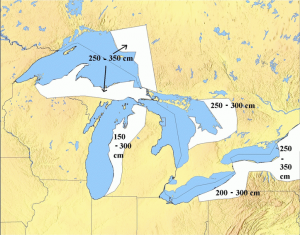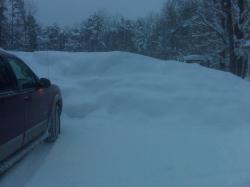 Northeast Ohio (where I hail from) has seen more than a week of non-stop snow, and as I write this, freezing rain is glazing the deep drifts like a mad baker on a donut-spree. Except this glaze is dangerous, not delicious, and the snow itself is far less delightful than dessert pastries. I may sound bitter, or perhaps unhinged, but a couple decades in the Snow Belt will do that.
Northeast Ohio (where I hail from) has seen more than a week of non-stop snow, and as I write this, freezing rain is glazing the deep drifts like a mad baker on a donut-spree. Except this glaze is dangerous, not delicious, and the snow itself is far less delightful than dessert pastries. I may sound bitter, or perhaps unhinged, but a couple decades in the Snow Belt will do that.
Snow and cold weather have recently propelled the Southern United States into the headlines (apparently it’s so cold, iguanas are falling out of the trees – not to mention, of course, the very real threat of crop failure). I defy anyone to show me a headline highlighting heavy snowfalls in the Great Lakes region (the one above doesn’t count, cheater). There aren’t any, because it’s not really news – just another day in the life for those of us here in the Snowbelt.
The Great Lakes Snowbelt is so snowy due to – surprise! – the Great Lakes. Much of the Snowbelt receives more than 100 inches of snow per year; some places regularly see more than 150 inches annually (the record winter for my hometown of Chardon, OH, ’59-’60, saw 161.45 inches, followed closely by what my family calls the Great Snow of ’96). These impressive tallies are made possible by a mechanism known to meteorologists and the denizens of the Snowbelt as lake-effect  snow. Basically, cold air blows over the warm lakes and collects moisture, which it then releases on their southeastern shores in the form of snow. This continues until the lakes freeze. Sometimes they don’t freeze at all. Even when they do, though, we’re still not safe: iced-over lakes couldn’t stop the deadly Great Lakes Blizzard of 1977, which occurred when strong winds blew accumulated powdered snow off of frozen Lake Erie (little new snow actually fell – but winds of 60 mph made that fact irrelevant).
snow. Basically, cold air blows over the warm lakes and collects moisture, which it then releases on their southeastern shores in the form of snow. This continues until the lakes freeze. Sometimes they don’t freeze at all. Even when they do, though, we’re still not safe: iced-over lakes couldn’t stop the deadly Great Lakes Blizzard of 1977, which occurred when strong winds blew accumulated powdered snow off of frozen Lake Erie (little new snow actually fell – but winds of 60 mph made that fact irrelevant).
Really, though, it’s silly to complain. There’s nothing we can do about it, and it makes the region rather unique – supposedly the only other comparable places in the world, in terms of winter weather, are the west side of the Japanese island of Hokkaido and the west side of Russia’s Kamchatka Peninsula (other spots like Salt Lake City, of course, experience lake-effect snow, but to a considerably lesser degree). And it toughens us up, too; no matter where I go, barring the Himalayas, Siberia, or the above, the winter weather won’t seem half as bad by comparison.
At any rate, though, those southern iguanas have little to grumble about. They should try a winter up here sometime.

Photo credit: Olivia J. Lang.
Hullo, how are you? I truly like ur blog! I am wondering if you can assist me (I am certain some other subscribers might also be interested). I would also like to get involved in creating a blog also and I currently write a blog with wordpress, but it is quite difficult for me to create and I would rather like to try to make my blog with movable type instead to check if it will be easier. As a movabletype webmaster yourself, do you maybe maybe know were i can learn tutorials to do this myself?? Thanks!
Thanks for your kind words! This site was helpful to me: http://www.learningmovabletype.com/